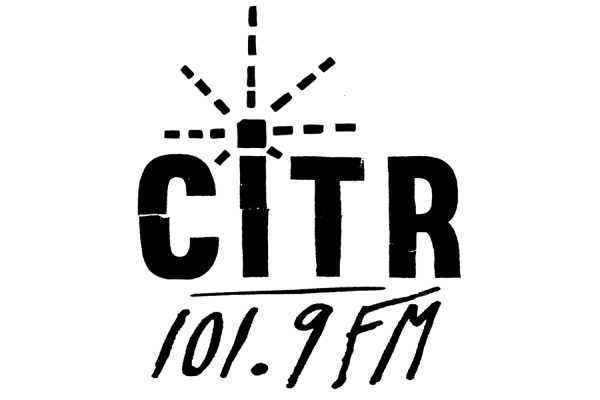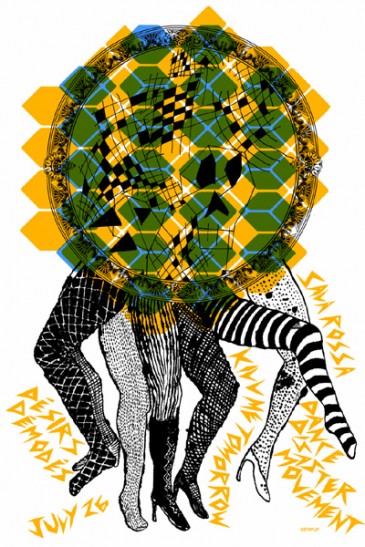Popular culture is flooded by a dizzying amount of hip hop. As light reflected through a prism, the multitude of colours and expressions can be overwhelming, and by attempting to view everything at once, the myriad blends together into a uniform whiteness, monolithic and uninteresting. Yet by studying hip hop as a whole, the individual facets of the art form become more apparent: the cut of this crystal contains song, poetry, dance, turn-tabling, graphic art, and more. Much of the hip hop we hear is an amalgam of these different specializations, blended just enough that the final product can be sold, usually wrapped in an exciting package of sex and violence. Credit to Sean Lala and the people at Spectrum Events, then, for creating the 604 Hip Hop Expo, an event that celebrated the artistic differences within hip hop.
Rooted in the depths of musical expression, hip hop emerged as a celebration of urban and modern art. From the greatest talents of jazz, be-bop, and scat, the pioneers of hip hop drew the method of improvising on a single arrangement, gospel rhythms, soulful funk bass lines and much of the introspective
retrospective of blues musicians. The children of the baby-boom, the first generation of hip hop, were the first generation to grow up with libraries of
contemporary music in the household.
By rooting through record collections, hip hop was conceived and expressed from atop the art of earlier musicians. This was displayed by the Expo’s first event, an eve of turn-tabling by deejays J-Rocc and Peanut Butter Wolf. Both acclaimed producers (J-Rocc of the Beat Junkies, and P.B. Wolf of Stone’s Throw Records) were billed under a specific challenge: they would play only 45’s. By limiting themselves to 7” vinyl, they displayed their nimble-fingered skill in mixing in fast-moving singles, which they did tirelessly. Foremost, however, their choice of vinyl harked back to the first recordings to Atlantis was filled with 70’s T.V. series theme songs that cut into heavy horns and James Brown samples thick with suspenseful pitch.
The only falsehood propagated in the flier for the J-Rocc/P.B Wolf show was that it was “deejay battle.” If only conflict was always so cooperative. The duo
were collaborating to fuel the crowd’s appreciation, taking turns on the tables, tapping each other out when one felt he had the perfect track to follow the
current song. P.B. Wolf added his love of Blue Note jazz recordings to the mix. Then sliding the fader between Hancock and Motown, seemingly for the
benefit of the crowd, they included many of the original songs that top-40’s hip hop samples in its hooks and choruses, allowing many in the audience to “recognize” their favourite hits in the work of artists 30 years ago. The atmosphere of the party only grew in intimacy, until the deejays pulled out what is arguably the greatest crowd pleaser: the reggae, reminding all the fans of their favourite moments of bud, beanbags, reeds, and Ché. The partystarting
hosts pushed the dancers past 1:30 on a Sunday night for an incredible opening to the Expo.
Richard’s on Richards hosted the next night’s activities. If Monday’s performance illustrated hip hop’s roots from the bottom of the record stack, Tuesday’s display promoted the art form’s present from the top of the stage. Hip hop as a vocal performing art begins with a mouth, a mind, and a microphone; the
end is to both interest and entertain a crowd. The vocal style of rapping, with its quick pace and emphasis on wordplay, makes it difficult to display to audiences of thousands, but ideal for the intimate atmosphere of a club like Richard’s on Richards. Emcees Aceyalone, One Be Lo, and Bokue One rallied the crowd, delivering intelligent, playful performances without the image-heavy promotion associated with more glamorous names. By first mixing with the crowd and then taking to the stage, the night felt like one of collaboration. These emcees in particular are known for their creativity and lyrical mastery, having participated in many different collectives and projects. Aceyalone has to his name both Project Blowed and Haiku D’Etat along with his solo work. All are highly credited, and he truly swayed the Vancouver fans.
The hip hop Expo went from turntablists to emcees and back to DJ’s as Richard’s on Richards was followed the next night by DJ ?uestlove. Ahmir “?uestlove” Thompson is known as the bandleader and co-producer of The Roots, hip hop’s darlings of originality and authenticity. In between working with The Roots and producing songs by many different artists (from John Mayer to Christina Aguilera), ?uestlove tours as a solo DJ famous for playing crowdpleasing
party jams. As ?uest took to the booth with his signature afro, he plugged his turntables into his iBook. The glowing apple and the white plastic frame
radiated in the black lights of Atlantis, giving the laptop an almost divine glow as Thompson queued songs up on the screen and then mixed them manually out onto the dance floor. The crowd was drawn largely because of ?uestlove’s status as one of the key architects of the legendary roots crew, a veritable Guggenheim of contemporary music. Beginning with Ray Charles’ “I Got a Woman” and mixing it into Kanye West’s “Gold Digger,” ?uest set up his formula for the evening: original soul sample into popular hit song. Additionally, he seemed focused on reminding the crowd of when they first fell in love with
hip hop, spinning the Beastie Boys and the Fugees. He lingered on a few bands, namely A Tribe Called Quest, De La Soul, Outkast, and the Beatnuts. The crowd not only felt entertained, they almost felt honoured: longtime favourites such as the Native Tongues were finally getting played on the dance floor. Ultimately, ?uestlove was tying together the roots planted on Sunday with the lyrical display seen at Richard’s on Richards.
Hip hop wanes and waxes in this Pacific Northwest town. Larger acts blow into town, eclipsing the slim crescent of local talent that rises at weekly venues
like Lamplighter’s Monday Night Live. The shows at Lamplighter, while vibrant, are fickle like this autumn weather: sometimes beautiful, sometimes miserable, a blend that Vancouverites have learned to endure and even enjoy. In the cycle between the local regular shows and the large, GM Place concerts, truly midrange hip hop brings a strong attraction to lovers of the art form. This “mid-range,” a category lacking a lustrous name, encompasses all the music that has risen above the underground yet remains hidden just beyond the radio hits and MTV. Those who broke into this mid-range reside on the dark side of the moon, just beyond the spotlight, occasionally peeking out to feature on a bigger star’s album or even, as The Roots did in 1999, to win a Grammy. The music produced by this group of artists (who are grouped here only by their level of fame, and not necessarily anything but) is widely celebrated by the aficionados who follow threads of talent back to the source, and are generally unsatisfied with the mainstream material produced by much of the industry. Thanks to the people at Spectrum Events, Vancouver receives the quality talents of this diverse and vibrant group of artists.



